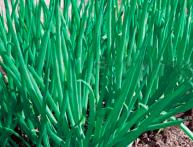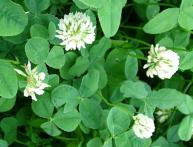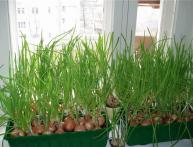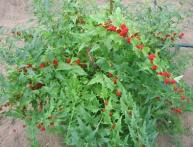Lupine: growing from seeds and care features
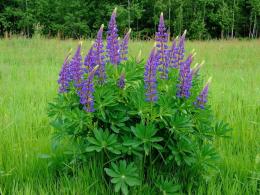
Lupine is a beautiful ornamental plant of the Legume family. These flowers fit perfectly into landscape design. In addition, the plant enriches the soil with nitrogen and improves its structure, which is very important for the good growth and development of other crops.
Content:
- Lupine: plant description
- Collection of planting material
- Preparing seeds for planting
- Soil planting technology
- Features of plant care
Lupine: plant description
This perennial a plant popularly called “wolf bean”. Some species are grown as an annual plant. Lupine can reach a height of 50 cm. The stem is erect and branched. There are a large number of varieties that differ in decorativeness.
The most popular varieties are: Minaret, Fireworks, Lulu, Russell, Apricot. Flowering begins in May or June with bright clusters.
The color of the inflorescences can be different: sunny yellow, pink, lilac, violet, blue. Perennial lupins bloom only in the second year. The leaves of the plant are palmately compound and alternately green in color. Perennial lupins have a powerful root system, so the plant is resistant to drought and frost.
Collection of planting material
At the end of flowering, several dry inflorescences should not be removed. From them you can get sowing material. The pod should be dark in color and dry. It is advisable to collect seeds in sunny weather. If seed material is collected in damp weather, they will begin to rot.
The seeds are removed from the pod, laid out on paper and left to dry in a warm place. Direct sunlight should be avoided. After this, pour into a glass container and store until sowing. In addition to a glass jar, you can use fabric or paper bags.
Preparing seeds for planting
Before sowing seeds into the soil, they need to be prepared. To do this, scarification is carried out. This process involves breaking the integrity of the seed shell. The procedure promotes rapid germination and increased germination. There are several methods of scarification.
Mechanical scarification. It consists of mechanical processing using sandpaper, river sand, blade, etc. Take a handful seeds and grind with coarse river sand or rub between sheets of sandpaper. During the procedure, it is important not to damage the embryo. After scarification is completed, the seed material is soaked.
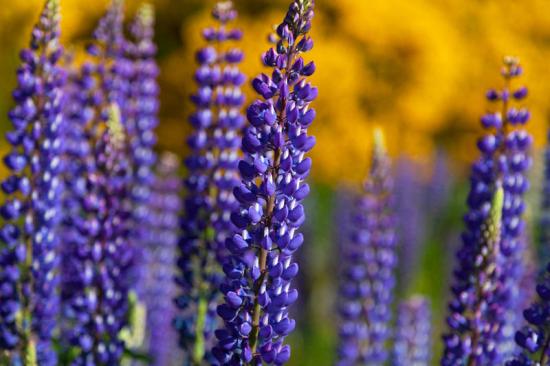
Thermal scarification. Place the seeds in cheesecloth, place in the refrigerator for a few minutes, and then pour over boiling water. You can first put a gauze bag with seeds in boiling water, and then in cold water. Exposure to high and low temperatures produces positive results. The procedure should be performed 2-3 times. Seeds whose shell has burst are removed from the bag, and the rest continue to be processed.
Chemical scarification. The procedure involves soaking the seeds in special chemical solutions. For this purpose, use a chlorine solution or potassium permanganate. For 200 ml of water you will need 2-3 drops of solution. In this case, the seed material is placed in a chlorine solution for 10 hours, and a solution of potassium permanganate for 15 minutes.
These methods apply to seeds collected independently.Stores usually sell ready-made scarified seeds.
Soil planting technology
Sowing seeds in the ground is carried out after the snow has melted. The optimal time for this is April. Many gardeners plant seeds for the winter. This is usually done at the end of October. These are the most suitable conditions for the plant. Before spring arrives, the seeds will ripen and germinate quickly. The seed material is deepened into the soil a couple of centimeters and lightly sprinkled with peat. When planting, you should maintain a distance between seedlings of 5-10 cm.
Video about proper planting of lupine:
In the fall, it is necessary to prepare the area for sowing seeds. Lupine loves sandy or loamy soil. If the soil is acidic, then you need to add lime or dolomite flour. Per square meter you will need 5 kg of the specified substance. Lupine does not like alkaline soils. To make the soil slightly alkaline, peat is used.
In regions with cold climates, sowing seeds for seedlings is done at home. The procedure is performed at the beginning of spring in order to have time to plant seedlings with the onset of warm days. When growing seedlings it is necessary to prepare the boxes and make drainage holes in them. Next, place the soil mixture, which will consist of 2 parts turf and peat and 1 part sand. Deepen the seeds slightly and cover with film. You can plant seedlings in open ground at the end of April if the weather has become warm.
Features of plant care
It is advisable to grow lupine in a sunny area. At first, the plant should be regularly weeded, the soil loosened and weeds removed. Subsequently, adult plants are hilled. For lupins, as they grow, it is necessary to arrange supports, since the wind can break them.
It is also necessary to regularly remove faded buds and dried leaves. This procedure will extend the flowering time of lupins. In addition, this protects against self-seeding. This ornamental plant should be watered frequently, but moderately. With the onset of warm summer days, you need to water more abundantly.

Before preparing for winter, flower stalks and damaged leaves are removed, and the soil around the plant is mulched. If lupine varieties have poor frost resistance, it is recommended to cover the plants. After 5-6 years, lupine must be removed, as the plant is aging and should be replaced plant young seedlings.
Lupine does not require care. By following all the indicated recommendations for growing and caring for the plant, you can admire these beautiful decorative flowers for a long time.





